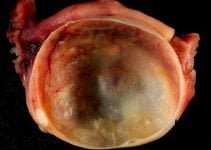Birth control contraception is important for maintaining a healthy sex life and protecting yourself against unwanted pregnancy and sexually transmitted diseases. There are many different options for contraceptive methods available to you, which is why it’s important to find the one that best suits you and your lifestyle.
Every contraceptive method comes with different benefits and side effects that are important to know and understand before using.
Picking the best birth control method is dependent on your health and what will be most effective and accessible for you. Figuring out the right birth control method that fits you can be overwhelming with the number of options accessible, which is why we’ve compiled a list of the contraceptive methods available.
Over the counter options
These are the contraceptive methods that don’t require a prescription, which can be fitting for spontaneous moments or if you don’t feel like waiting for an appointment. These are also mostly short-term solutions, and they are available at most drug stores and pharmacies.
Condom
The condom comes in male and female form. The male condom consists of a thin latex material that fits over the penis and blocks sperm from ejaculating from the penis and entering the vagina.
Female condoms have a similar concept, but they are thin latex tubes that are placed inside the vagina to block sperm. Male condoms are generally more effective though, with a 98% effectiveness rate [1].
Condoms are common methods of birth control because they are widely available and can be bought in most stores at an affordable price. Condoms are great methods for protecting against STDs, but it is important to remember that they aren’t always perfectly effective.
Contraceptive Sponge
The contraceptive sponge is a method of female contraception that fits in the vagina to block and kill sperm when it enters the vagina. This contraceptive product is soaked in spermicide to help prevent pregnancy.
The contraceptive sponge is great for a short-term contraceptive solution, and it can be left in for multiple acts of intercourse within a 24-hour span.
However, the sponge must be used carefully due to an increased risk of toxic shock syndrome [2], so it’s important to remember to take it out after its allotted time.
Prescription options
Birth Control Pill
Prescription birth control pills are a form of female contraception that blocks ovulation by preventing the ovaries from releasing eggs. The pill also prevents sperm from entering by thickening the cervical mucus. Birth control pills have a 91% effectiveness rate and are a very common form of contraception that provides more long-term effects [3].
A pill is a great option for women who aren’t comfortable with having anything physically inserted in their vagina, and it can also lessen the effects of periods. Some women do not like the hormonal effects that the pill can have on the body, such as breast tenderness, weight gain, and mood swings.
Hormonal Intrauterine Device (IUD)
The IUD works as an internal contraceptive instrument that is placed in the uterus by your doctor. IUDs can remain implanted for several years, and the hormonal version helps release progestin to affect the ovulation process and effectively decrease the chances of pregnancy.
IUDs are especially effective, with a 99% effectiveness rate, and they can be left inserted for three to five years [4].
Copper Intrauterine Device (IUD)
The Copper IUD is also an extremely effective IUD device that is inserted in the uterus by a doctor. The Copper IUDs effectively prevent egg fertilization in the uterus. You can leave them inserted for up to 10 years, which is great for women wanting a long-term contraceptive solution [5].
However, Copper IUDs can be a bit pricy, so it’s important to see what kind of coverage your health insurance provides. The side effects of Copper IUDs can range from random spotting to heavier period symptoms.
Birth Control Patch
The birth control patch is another effective form of contraception that women can get. The patch is about 2 square inches and is placed on the skin to affect the release of eggs and prevent egg implantation by releasing estrogen and progestin.
Essentially, the birth control patch acts the same as a birth control pill without it being ingested. The birth control patch must be changed once a week, and you may experience mild side effects as a result.
Vaginal Ring
The vaginal ring is an insertion ring flexibly placed inside the vagina to prevent pregnancies by affecting ovulation. The ring releases progestin and estrogen to thicken the cervical mucus.
You can insert the ring yourself and leave it for three weeks before taking it out to have your period. The vaginal ring is an effective choice, with a 92% effectiveness rate [6].
Birth Control Shot
The birth control shot is essentially a shot in the arm that helps prevent pregnancy. The shot injects progestin to prevent pregnancy, and it must be administered every 90 days in your doctor’s office.
The shot has a 98% effectiveness rate though, so it is a viable option for people looking for an extremely effective contraceptive method. The birth control shot may have some effect on your period.
Morning-After Pill
If you used a contraceptive method or had unprotected sex and fear that you may have had an accident, the morning after pill is available at pharmacies. The morning after pill consists of hormones that can effectively prevent the egg from implanting into the uterine lining after intercourse.
The morning after pill should not be used as a consistent form of contraception, as long-term use can have hormonal effects. Therefore, you should only use the morning after pill as an emergency method to prevent pregnancy. The morning after pills available include levonorgestrel and ulipristal acetate.
References
- How effective are condoms? [Link]
- Toxic-shock syndrome and the vaginal contraceptive sponge. -ncbi [Link]
- Can a person get pregnant while taking the pill? By Rachel Nall [Link]
- Effective birth control without a daily pill -Mirena [Link]
- Safety, efficacy and patient acceptability of the contraceptive and non-contraceptive uses of the LNG-IUS -ncbi [Link]
- How effective is contraception at preventing pregnancy? [Link]



